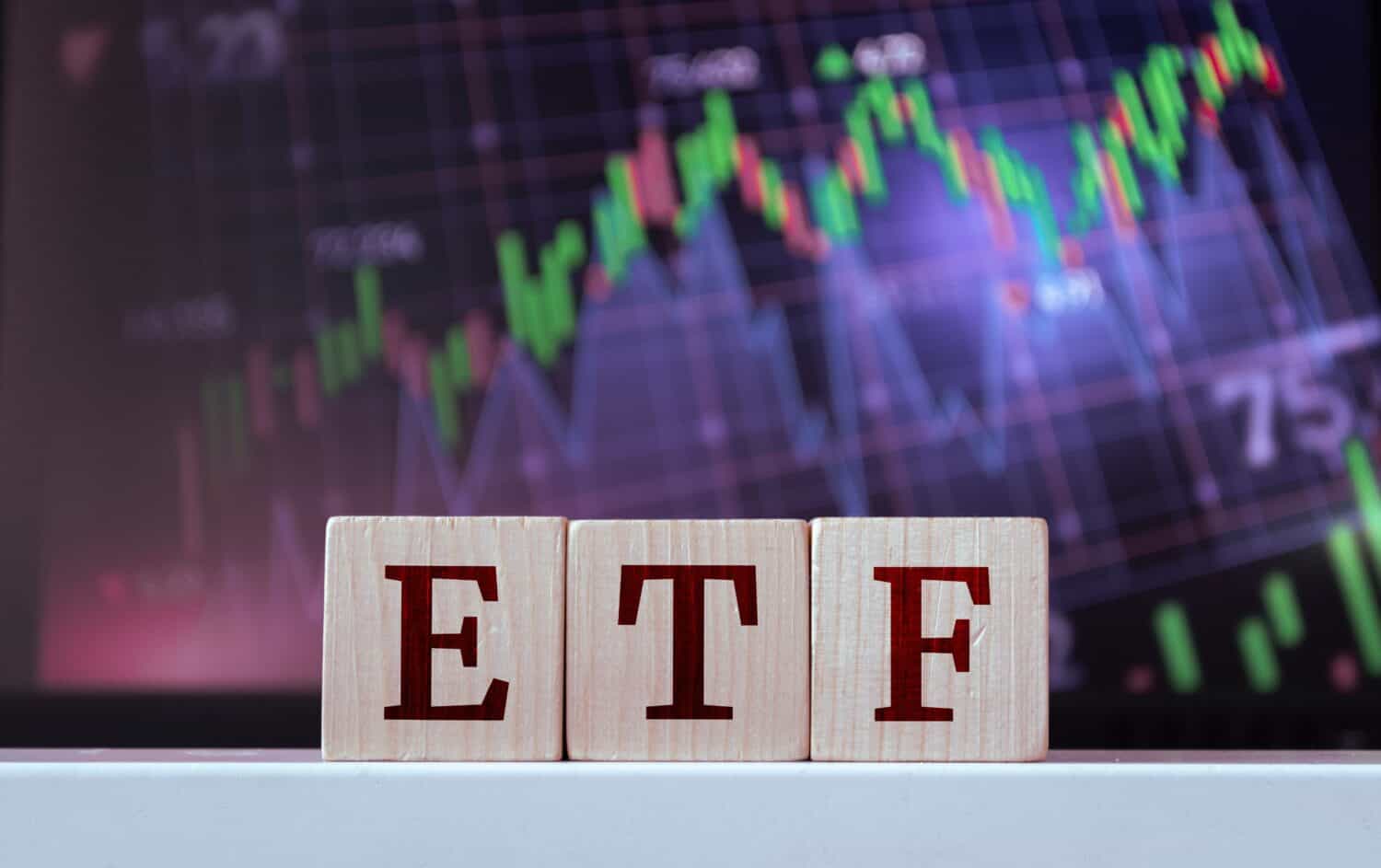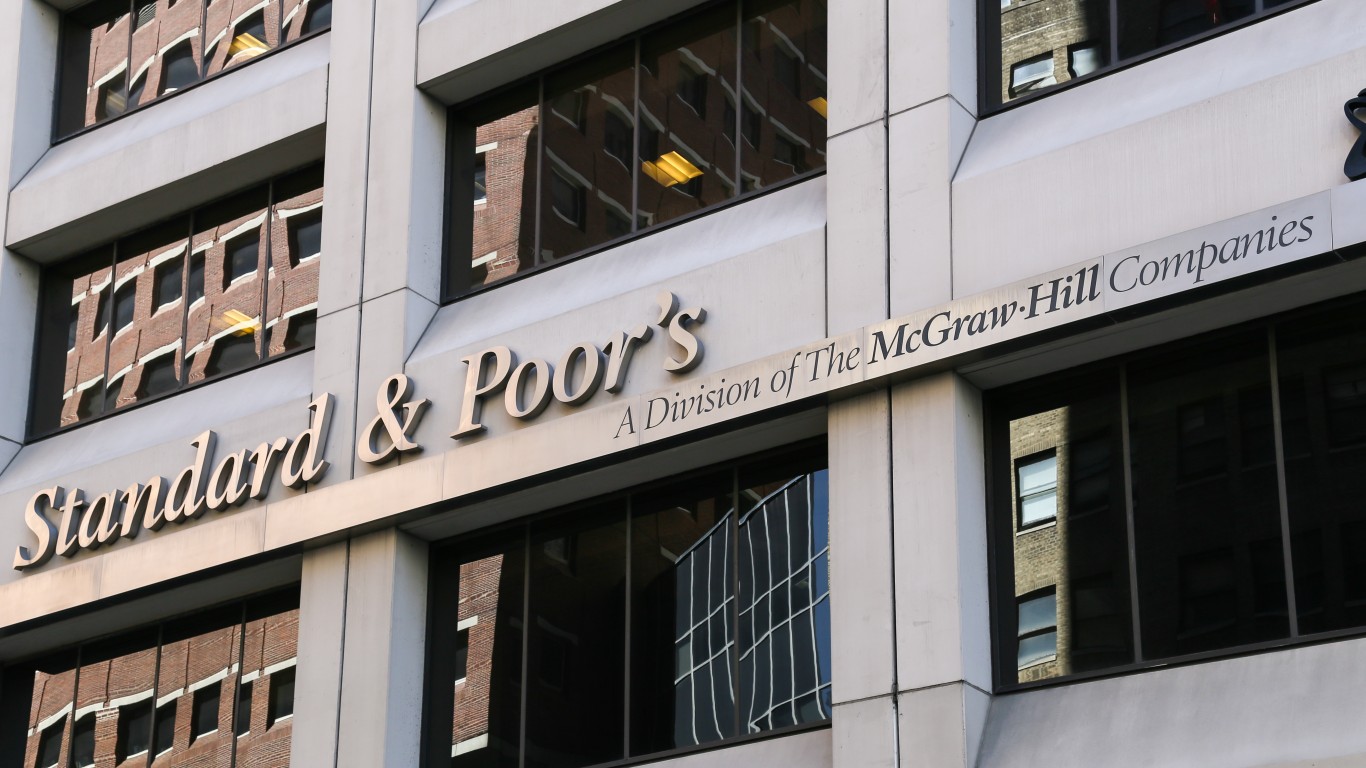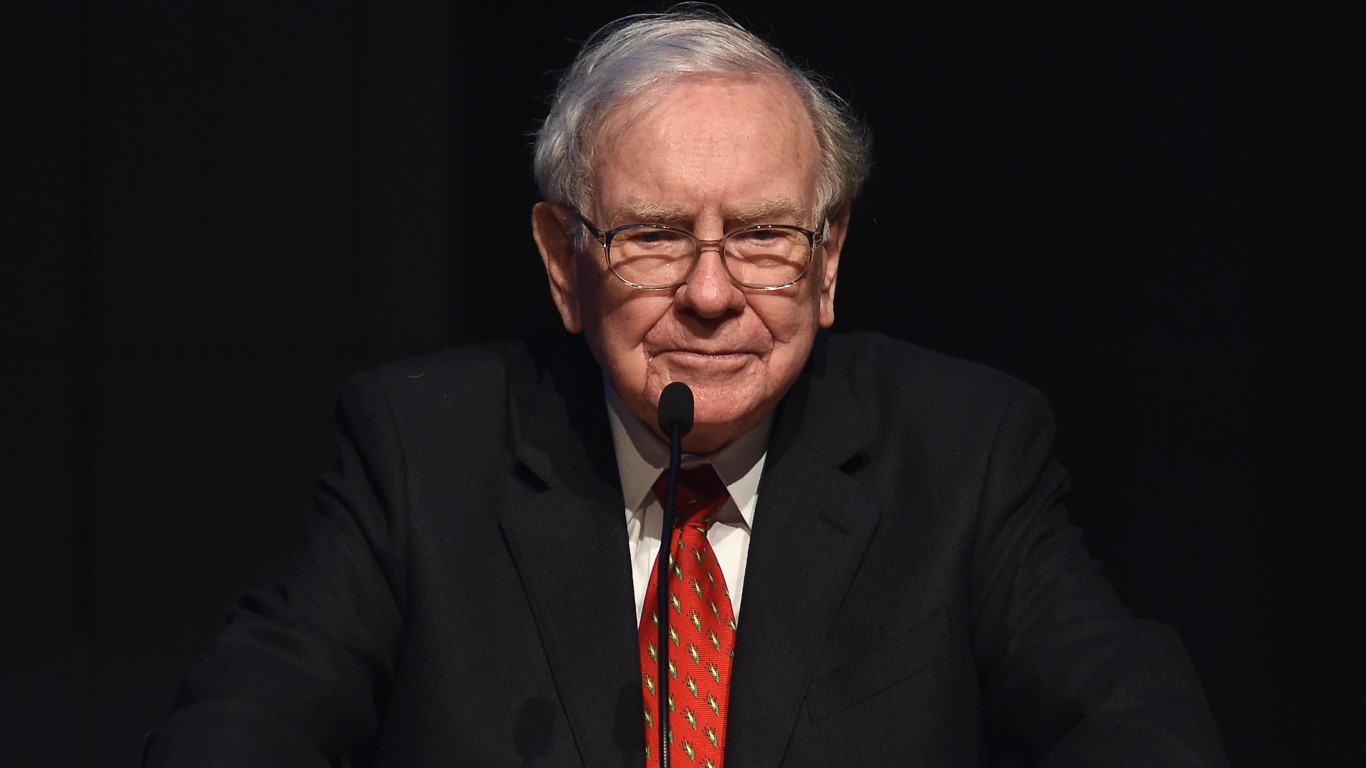
24/7 Wall Street Insights
- Exchange Traded Funds offer a stock market type platform to invest in various indexes
- AGG and BOND are ETF examples of index market platforms for the US investment grade and broader global range investment grade bond markets, respectively.
- VOO is an example of an ETF for investing in the S&P 500.
- 24/7 Wall Street has a free report to read on what may be “the next Nvidia” if you click here.
Many people who saw the gains made in the stock market since 2016 face a dilemma. There are those who are unsure as to which stock still can run higher. Not every stock still can be Nvidia (NASDAQ: NVDA). Others are concerned that the market is a bubble ready to burst. Some look at the overall gains of the Dow Jones Industrial Average and S&P 500 and would have been satisfied with those gains. Mutual Funds offer diversification and a way to invest in an index on a prorated basis. Exchange Traded Funds (ETF) also offer these features, with some differences.
ETFs vs. Mutual Funds – What’s the Same? What’s the Difference?

Exchange Traded Funds and Mutual Funds have a number of similarities. Here are the primary ones:
- Both ETFs and Mutual Funds are pools of individual stocks, bonds, derivatives contracts or whatever securities represent the sector of interest.
- Both ETFs and Mutual Funds offer a prorated interest in the total fund’s assets, which offer diversification and risk mitigation properties.
- Both ETFs and Closed-end Mutual Funds trade on NYSE or NASDAQ at a market bid/ask price based on a fixed number of shares.
Their differences are more distinct – these apply to Open-Ended Mutual Funds::
- Mutual Funds have minimum investment amounts. One can buy a single ETF share.
- Given that par value for a single bond is $1,000, An ETF share that tracks bonds can be purchased for considerably less.
- Mutual Funds trade for the NAV price for the entire day. ETFs trade at a live bid/ask market price, which can vary within seconds.
- Most ETFs are passively managed and pegged to an index. Mutual Funds are usually actively managed, which is correspondingly costlier.
- Mutual Funds have varying loads, and early redemption fees, which are factored into their costs. ETF costs can be a premium to NAV, broker commissions, and market maker bid/ask spreads.
- Mutual Funds are taxed differently (usually higher) than ETFs with regard to capital gains.
iShares Core US Aggregate Bond ETF

ETF Stock: iShares Core US Aggregate Bond ETF (NYSE: AGG)
Yield: 3.41%
Shares for $7,000: 71.97
Fees: 0.03% expense ratio
Created by asset management goliath BlackRock, iShares Core US Aggregate Bond ETF is an exchange traded fund that tracks the entire US investment grade bond market. It tracks the Bloomberg Aggregate Bond Index (BBG). This covers bonds rated Aaa/AAA by Moody’s and Standard & Poor’s all the way down to Baa3/BBB-. At the time of this writing, it has $110.2 billion AUM. For investors who want a prorated investment in the high grade bond market, iShares Core US Aggregate Bond ETF would accurately deliver returns commensurate with the BBG within a few hundred dollars +/-.
The top 10 holdings of iShares Core US Aggregate Bond ETF covers top rated US government bonds down to Aa1 rated Wells Fargo and A1 rated Bank of America:
- US Treasury (43.35%)
- Federal National Mortgage Association FNMA (11.52%)
- Federal Home Loan Mortgage Corp. FHMC (5.74%)
- Government National Mortgage Association II GNMA (5.57%)
- Uniform MBS (1.92%)
- Bank of America Corp. (0.59%)
- JP Morgan Chase & Co. (0.56%)
- Morgan Stanley (0.45%)
- Government National Mortgage Association I (0.43%)
- Wells Fargo & Co. (0.38%)
An investment made in June 2014 would have earned slightly over $2,000 as of the time of this writing. The BBG is roughly $300 higher in the same period.
PIMCO Active Bond Exchange Traded Fund

ETF Stock: PIMCO Active Bond Exchange Traded Fund (NYSE: BOND)
Yield: 4.46%
Shares for $7,000: 76.76
Fees: 0.58% expense ratio
Created by Pacific Investment Management Company (PIMCO), the PIMCO Active Bond Exchange Traded Fund is an ETF that is benchmarked against the Bloomberg US Bond Aggregate TR USD index. That index tracks the performance of investment grade debt publicly issued in the major domestic and eurobond markets, including sovereign, quasi-government, corporate, securitized and collateralized securities.
With $4.23 billion AUM, the PIMCO Active Bond Exchange ETF holds a cross section of different rated bonds in its portfolio. A bond breakdown (by allocation size) includes the following:
- Government/AAA – 68.48%
- BBB Rated – 12.73%
- A Rated – 9.01%
- CCC, CC AND C rated – 3.57%
- AA Rated – 3.20%
- BB AND B Rated – 3.01%
Vanguard S&P 500 ETF

ETF Stock: Vanguard S&P 500 ETF (NYSE: VOO)
Yield: 1.32%
Shares for $7,000: 14.01
Fees: 0.03% expense ratio
The S&P 500 Index is considered a broader and more comprehensive cross section representation of US economic status than the Dow Jones Industrial Average. The Vanguard S&P 500 ETF replicates a version of the S&P 500 with a portfolio of stocks that are identical to those listed and weighted in the S&P 500 Index. With $455.6 billion AUM, the ETF allows for one to invest in the overall market, rather than specific companies.
As of June, the top 10 holdings in the Vanguard S&P 500 ETF were:
- Microsoft (NASDAQ: MSFT): 6.96%
- Apple Inc. (NASDAQ: AAPL): 6.30%
- Nvidia Corp. (NASDAQ: NVDA): 6.11%
- Amazon.com (NASDAQ: AMZN): 3.64%
- Meta Platforms Inc. (NASDAQ: META): 2.32%
- Alphabet Inc. Class A (NASDAQ: GOOGL): 2.30%
- Alphabet Inc. Class C (NASDAQ: GOOG): 1.94%
- Berkshire Hathaway – B (NYSE: BRK.B): 1.70%
- Eli Lilly & Co. (NYSE: LLY): 1.48%
- JP Morgan Chase & Co. (NYSE: JPM): 1.32%
In an example of how well Vanguard S&P 500 ETF tracks the actual index, an investment of $10,000 made in June 2024 is now worth $35,919 at the time of this writing, which is more than 2.5X. In comparison, the actual index was worth equivalently $35,227, which is $692 less than the ETF’s performance.
ETFs for many indexes and sectors are available. 24/7 Wall Street has covered several different ones in the past. For those who don’t have the capacity, bandwidth or risk tolerance to invest in and monitor individual stocks and bonds, ETFs afford a good way to gain exposure at a relative low cost and ease of transaction for both buying and selling.
Travel Cards Are Getting Too Good To Ignore (sponsored)
Credit card companies are pulling out all the stops, with the issuers are offering insane travel rewards and perks.
We’re talking huge sign-up bonuses, points on every purchase, and benefits like lounge access, travel credits, and free hotel nights. For travelers, these rewards can add up to thousands of dollars in flights, upgrades, and luxury experiences every year.
It’s like getting paid to travel — and it’s available to qualified borrowers who know where to look.
We’ve rounded up some of the best travel credit cards on the market. Click here to see the list. Don’t miss these offers — they won’t be this good forever.
Thank you for reading! Have some feedback for us?
Contact the 24/7 Wall St. editorial team.





